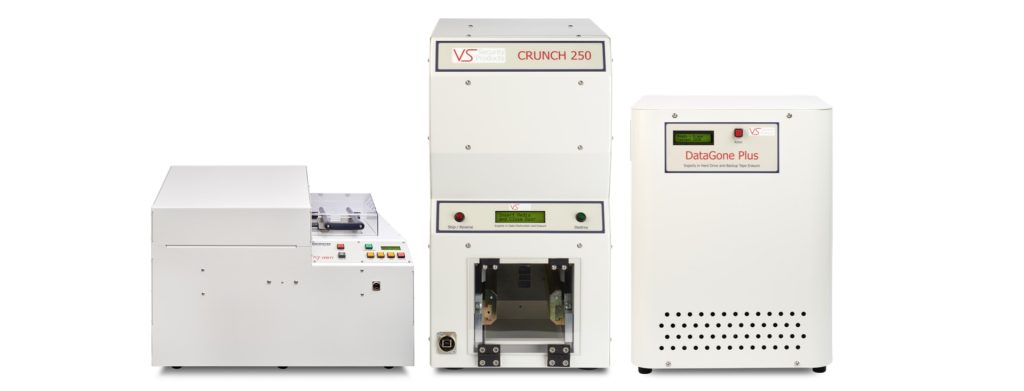The Vital Link: Cybersecurity and Data Destruction for Businesses and Governments

In today’s digital landscape, cybersecurity is no longer an optional extra for businesses; it’s a fundamental necessity. Organizations handle vast amounts of sensitive data, from customer information and financial records to intellectual property and trade secrets. Protecting this data from unauthorized access is paramount, and a critical part of that protection involves a seemingly counterintuitive concept: data destruction.
While firewalls and intrusion detection systems form the frontline defense against cyberattacks, data destruction acts as a vital last line. Simply deleting files is not enough. Modern data storage devices can often retain traces of seemingly erased information. This residual data, easily recoverable by sophisticated tools, becomes a prime target for cybercriminals.
Here’s where data destruction steps in, hand-in-hand with cybersecurity, to create a robust defense.
The Importance of Data Erasure
Data destruction, also known as data erasure, goes beyond simply deleting files. It involves permanently destroying data on storage devices, rendering it unrecoverable. This process minimizes the risk of a data breach even if a cybercriminal manages to infiltrate an organization’s system.
There are two main categories of data destruction methods: software-based and physical destruction.
- Software-Based Overwriting: Specialized software overwrites the storage device with random data patterns, multiple times. This is not suitable however for when disposing of hard drives and does not physically destroy the data on the device.
- Physical Destruction: This method involves physically damaging the storage device to the point where data recovery becomes impossible. Techniques include degaussing and hard drive shredding, suitable for hard drive disposal.
Degaussing: Erasing the Magnetic Fingerprint
Degaussing utilizes powerful magnets to disrupt the magnetic field of a storage device, such as a hard drive. This process effectively scrambles the data stored on the magnetic platters, rendering it unreadable. Degaussing is a reliable and efficient method for erasing data from a large number of hard drives simultaneously. However, it’s important to note that degaussing only works on magnetic media and is not suitable for solid-state drives (SSDs).
See the DataGauss Max for degaussing.
Hard Drive Shredding: The Ultimate Eradication
For the most secure and irreversible data destruction, hard drive shredding is the preferred method. Industrial shredders physically tear the storage device into tiny pieces, completely destroying the physical medium and making data recovery virtually impossible. This method is ideal for highly sensitive data, decommissioned equipment, and storage devices that are being discarded or recycled.
See the MediaGone 500 for high precision shredding.
Data Destruction: A Multi-Pronged Approach
A comprehensive data destruction strategy requires more than just choosing the right method. Here are some key considerations:
- Compliance: Many industries have regulations governing data security and disposal practices. Businesses must ensure their data destruction procedures comply with relevant regulations to avoid legal ramifications.
- Data Classification: Different types of data carry varying degrees of sensitivity. Organizations should implement a data classification system to prioritize destruction efforts based on the sensitivity of the information.
- Chain of Custody: Maintaining a documented chain of custody for data storage devices from the point of decommissioning to destruction is crucial. This ensures accountability and provides an audit trail for compliance purposes.
- Vendor Selection: Businesses should choose a reputable data destruction vendor with proven expertise and secure facilities. Certifications such as the National Association of Information Destruction (NAID) are a good indicator of a vendor’s commitment to secure data handling practices.
See the Data Destruction Auditor to find out how accountability can be implemented in data processes.
The Synergy of Cybersecurity and Data Destruction
Cybersecurity and data destruction work in tandem to create a robust defense against data breaches. While cybersecurity focuses on preventing unauthorized access, data destruction eliminates the value of stolen data. This layered approach significantly reduces the risk associated with data breaches and protects the organization’s reputation, finances, and intellectual property.
By implementing a comprehensive data destruction strategy alongside robust cybersecurity measures, businesses can significantly enhance their data security posture and operate with greater confidence in the digital age. Remember, in the battle against cybercrime, a strong defense requires both a watchful shield and a secure vault to guard your most valuable assets.
Photo credit: Karson

